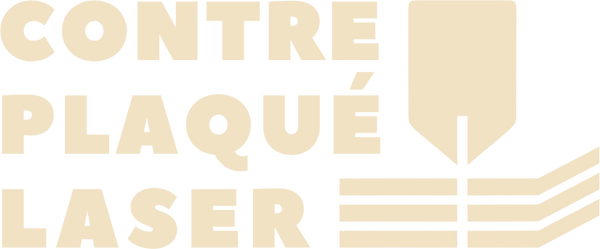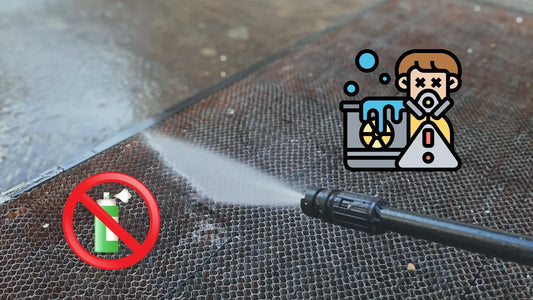
RECOGNIZING THE QUALITY OF WOOD
The different qualities of plywood can be classified according to two main criteria:
- The type of wood used : Plywood can be made from a wide variety of wood species, each with its own mechanical and aesthetic properties. The most common types are:
- Softwoods: maritime pine, spruce, fir, larch, etc.
- Hardwoods: birch, poplar, Okoume, beech, oak, etc.
- Gluing class : The gluing class indicates the resistance of the plywood to moisture and weather. There are three gluing classes:
- Class 1: for dry indoor use
- Class 2: for humid indoor use
- Class 3: for outdoor use
Panels based on phenolic glues should absolutely be avoided.
for laser cutting. Indeed, despite a powerful laser, the material does not
will not be pierced.
Depending on the gluing class, the following plywoods are distinguished:
- Grade 1 Plywood: This plywood is made from moisture-resistant glues, but it is not designed to be exposed directly to water or weather, so it is recommended for dry interior use.
- Class 2 plywood: This plywood is made from moisture and weather resistant glues. It is therefore suitable for damp interior use, for example for making bathroom or kitchen furniture.
- Grade 3 plywood: This plywood is made from weather-resistant glues. It is therefore suitable for outdoor use, for example for building boats, wooden houses or garden furniture.
With a powerful laser it is possible to cut plywood belonging to all three classes, although for the last two the laser speed will generally be much slower and the power higher.
Choosing plywood
The choice of plywood suitable for a given application depends on several factors, including the environment in which it will be used, the mechanical stresses to which it will be subjected and the desired aesthetic appearance.
The appearance quality of plywood is defined by the NF EN 635 standard. It is determined by the number and importance of certain characteristics inherent to the wood, such as knots, coloring, regularity of the wood structure, cracks, etc.
The appearance quality is indicated by two letters, the first for the face and the
second for the reverse side.
Faces
A : Perfect appearance, without apparent defects.
B : Fair appearance, with some minor defects, such as small or uniformly colored knots.
C : Acceptable appearance, with more significant defects, such as larger or contrasting colored knots.
D : Limited appearance, with significant defects, such as cracks or deformations.
Counterfaces
AA : Perfect appearance, without apparent defects.
BB : Fair appearance, with some minor defects, such as small or uniformly colored knots.
CC : Acceptable appearance, with more significant defects, such as larger or contrasting colored knots.
For further information: https://www.lecontreplaque.com



